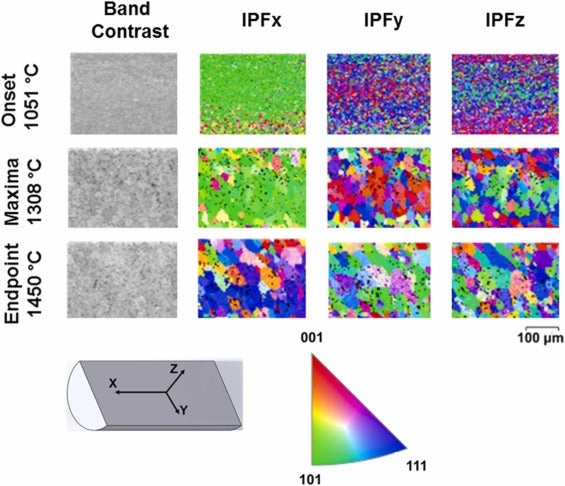
Scott Riley, a PhD candidate in the Advanced Material Laboratory, recently published his work entitled, “Influence of microstructure and phase morphology on the stability of high temperature irradiation resistant thermocouples.” The article discusses high temperature irradiation resistant thermocouples, which Idaho National Laboratory developed for measuring temperature within a nuclear reactor core. These thermocouples are composed of a phosphorus-doped niobium and lanthana-doped molybdenum thermoelements, an alumina insulation, and a niobium sheath. To stabilize the signal generated by these thermocouples, an initial heat treatment is required which exceeds the expected operating temperature. The phenomena behind the stabilization of the thermocouple signal is not well understood. Scott’s article evaluates the impact of the heat treatment on the structure, chemical stability, and electrical properties of the thermocouple’s thermoelements. During the stabilization heat treatment, a secondary phase of Nb3P was observed to form within the Nb-P thermoelement, along with an interaction region at the alumina/Nb-P interface. The stabilization of the of the thermocouples was found to be dependent upon both the formation of the alumina/Nb-P interaction region and the formation of the Nb3P phase within the Nb-P thermoelement.

Scott joined the AML as part of the Materials Science and Engineering Ph.D. program at Boise State University. During his time in the Advanced Materials Laboratory, he has worked on the design and characterization of thermal sensors as a part of the Advanced Sensors and Instrumentation Program with the Idaho National Laboratory. Before coming to Boise, Scott graduated with a Bachelor of Science Degree in Chemical Engineering from the University of California at San Diego (UCSD) in June of 2016. While at UCSD, he worked as a chemistry technician at Cuyamaca College for three years. During his final year at UCSD, he worked in Dr. Maple’s research group on the synthesis and doping of 1-2-20 compounds such as CeNi2Cd20-xZnx to both characterize the physical properties and produce Doniach phase diagrams. During his time on this project, he found the relationship between the structure and physical properties of these 1-2-20 compounds to be fascinating, which lead him to pursue a graduate degree in Materials Science and Engineering.